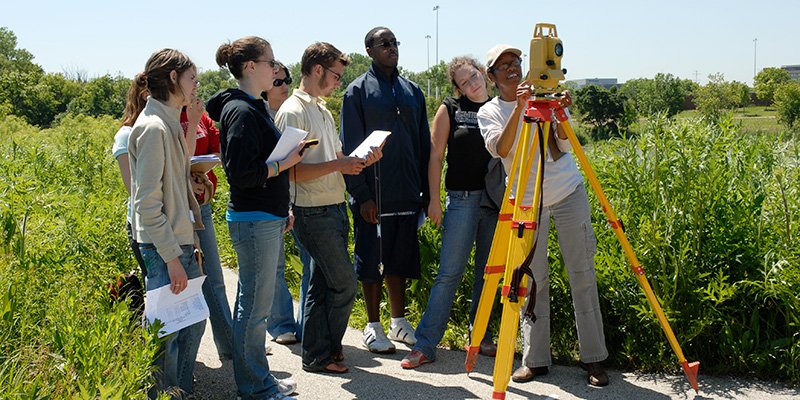
The Plant Collections Department acquires, documents, and studies all of the Chicago Botanic Garden’s permanent plants and their associated environments.
By definition, a botanic garden is a documented collection of living plants. The records created by the Living Plant Documentation Department improve the experience for visitors, students, gardeners, students, educators, researchers, and scientists. They develop inventories, labels, maps, DNA samples, herbarium vouchers, and digital images. Living Plant Documentation is also responsible for routinely updating the GardenGuide app, the Bloom Cart, and the What's In Bloom on the Garden’s website.
Records
The Garden’s records, which date back to 1972, have been computerized since 1985. A database of more than 2.6 million accessioned plants in the permanent collection contains information on each plant’s scientific name, common name, plant family, growth habit, origin, location, and ornamental characteristics. Staff members work throughout the year to keep this information updated and accurate. The term "accessioned" refers to plants that have been included in the permanent collections of the Garden. In contrast, "seasonal" plants refer to annuals, vegetables, and other plants used in temporary displays; while these plants are labeled, they are not accessioned into the permanent collections.
Search Our Plant Collections Database
Maps
The value of the location of a plant is paramount to effectively managing and protecting the plant collections. The Living Plant Documentation department maps the locations of all permanent woody and perennial plants in 2,306 localities at the Chicago Botanic Garden. The information is gathered using state-of-the-art laser survey equipment, and the maps are created and published using ArcGIS software from the Environmental Sciences Research Institute. Specialized maps are generated to support species verification, for planning the growth and expansion of garden facilities, and for educational purposes.
Plant Labels

A plant label connects the visitor to the plant collection of a Garden. The display label gives an identity to a plant; it includes scientific and common name. If space permits, the label will provide family name and origin. The information provided in a label helps a visitor, curator, scientist, student, and educator to connect the plant with its environment.
The Garden currently has 23,405 permanent labels, each engraved in a photographic process on anodized aluminum, using silver letters on a black background. Approximately 3,300 permanent labels are added every year. In addition, the Garden uses more than 4,000 plastic labels for annual plants and more than 800 temporary labels—made in-house on waterproof paper—for the Bonsai Collection, the Orchid Show, and special exhibitions.
Highlights
DNA vouchers from the Garden’s living collection are carefully collected and stored plant tissue known to contain the purest plant DNA, free of insect or disease contamination. They are collected, labeled, accessioned, and stored long-term in very cold (minus 20 degrees Fahrenheit) freezers. DNA analysis constitutes the backbone of modern scientific research into plant taxonomy. As of late 2016, 6,990 DNA vouchers were available for study.
Herbarium vouchers are the traditional tool used by classically trained taxonomists to identify species and their relatives. These dried, pressed, and frozen (kill bugs) specimens typically contain either flowers or fruits because these structures typically do not change even when the plants are grown in different environments. As of late 2016, 1,356 vouchers, primarily of plants collected in the wild or featured in the National Collections had been collected and were available for study.
Image vouchers are another tool available to taxonomists as they study the origins and genetic similarities of the plants of the living collection. Taxonomists provide the Garden with the characteristics they will need to see in order to confirm the accuracy of each group of plants at the Garden two years in advance. As of late 2016, 330,121 photographic images and 87,882 scanned slides were available for study, use in labeling, displayed on the GardenGuide app (6,421 taxa), and to support verification of the Collections.

